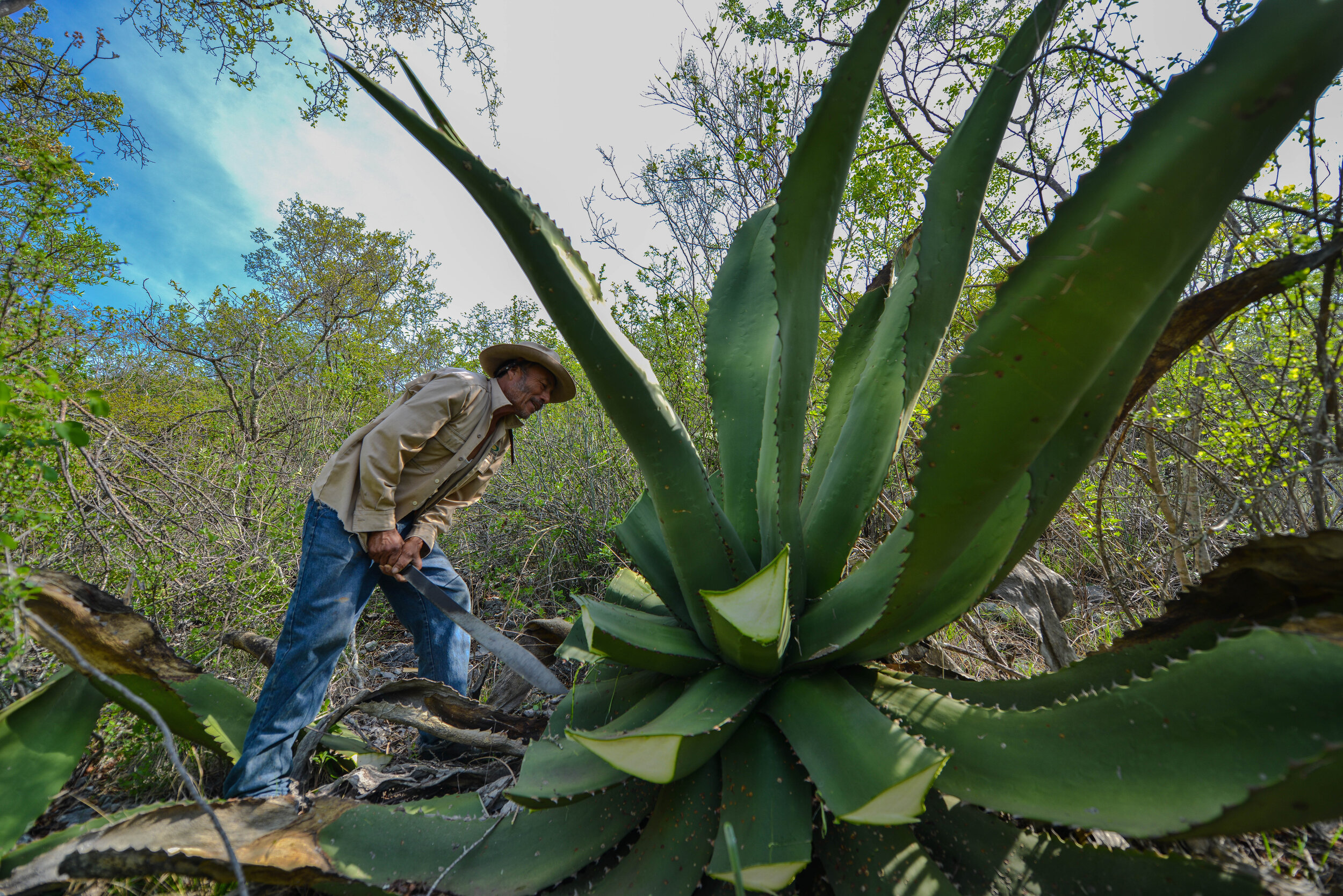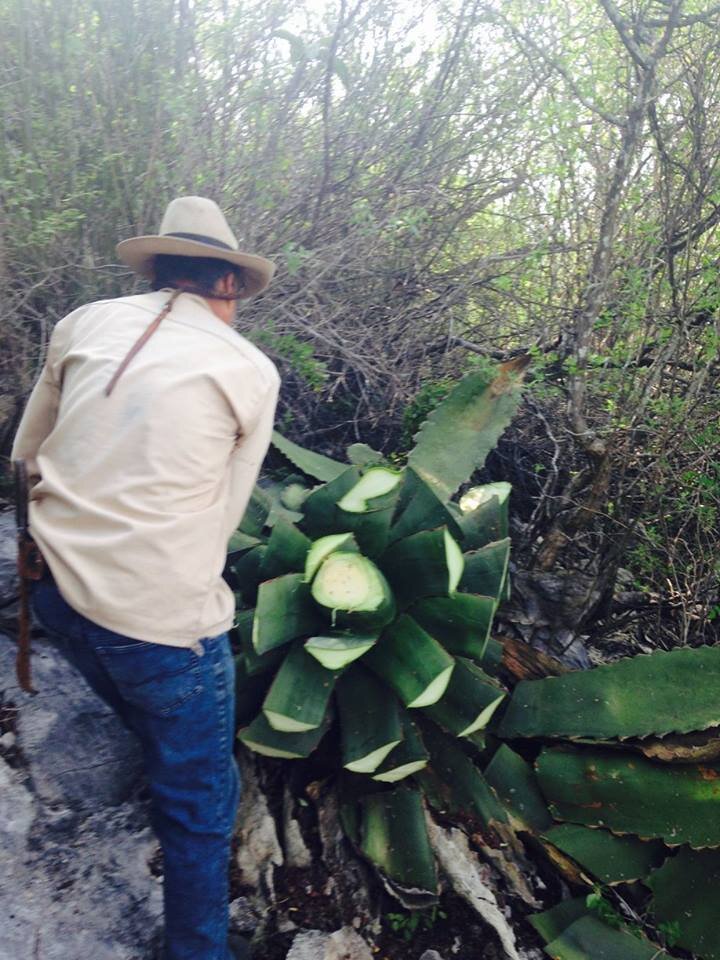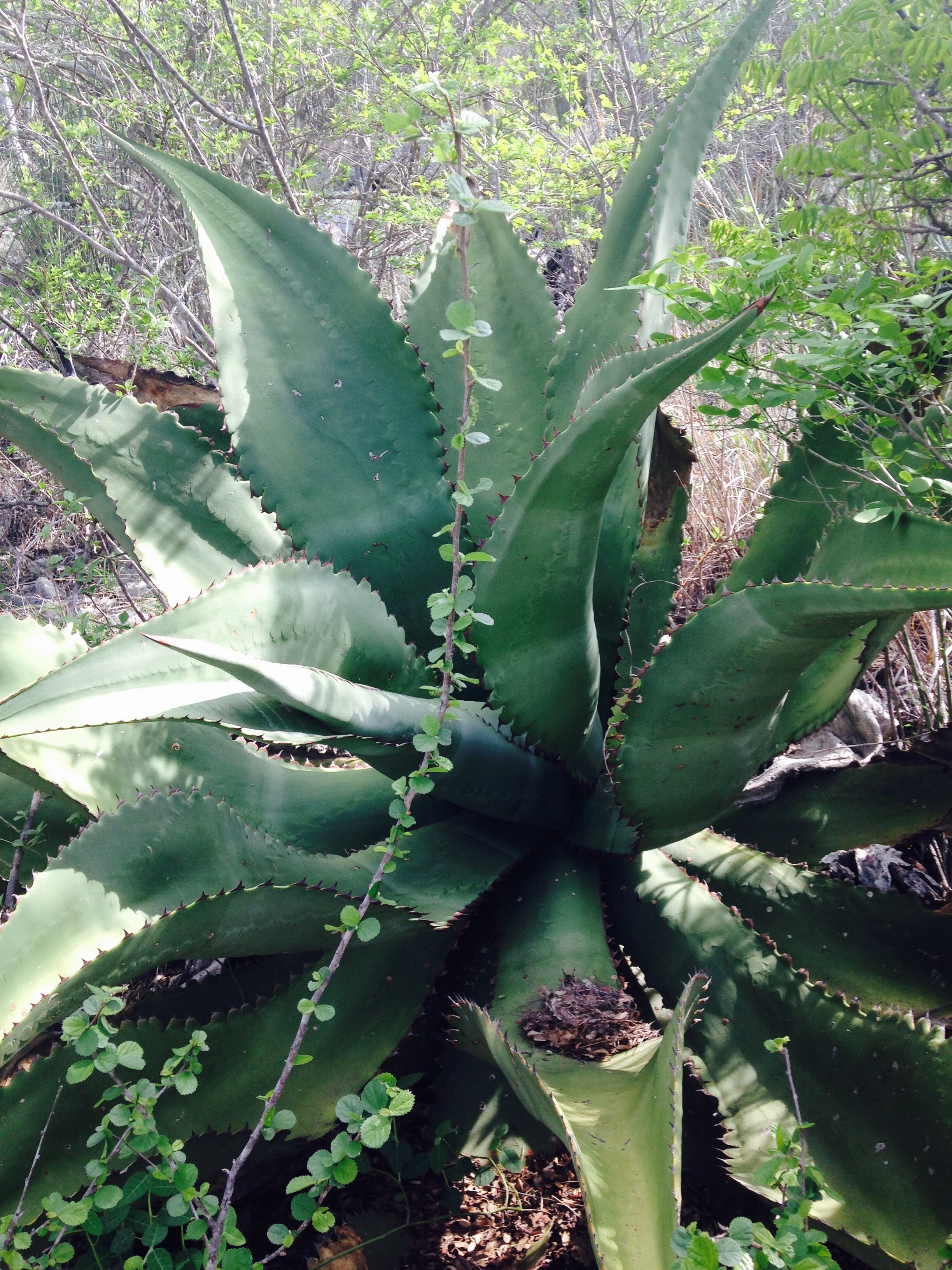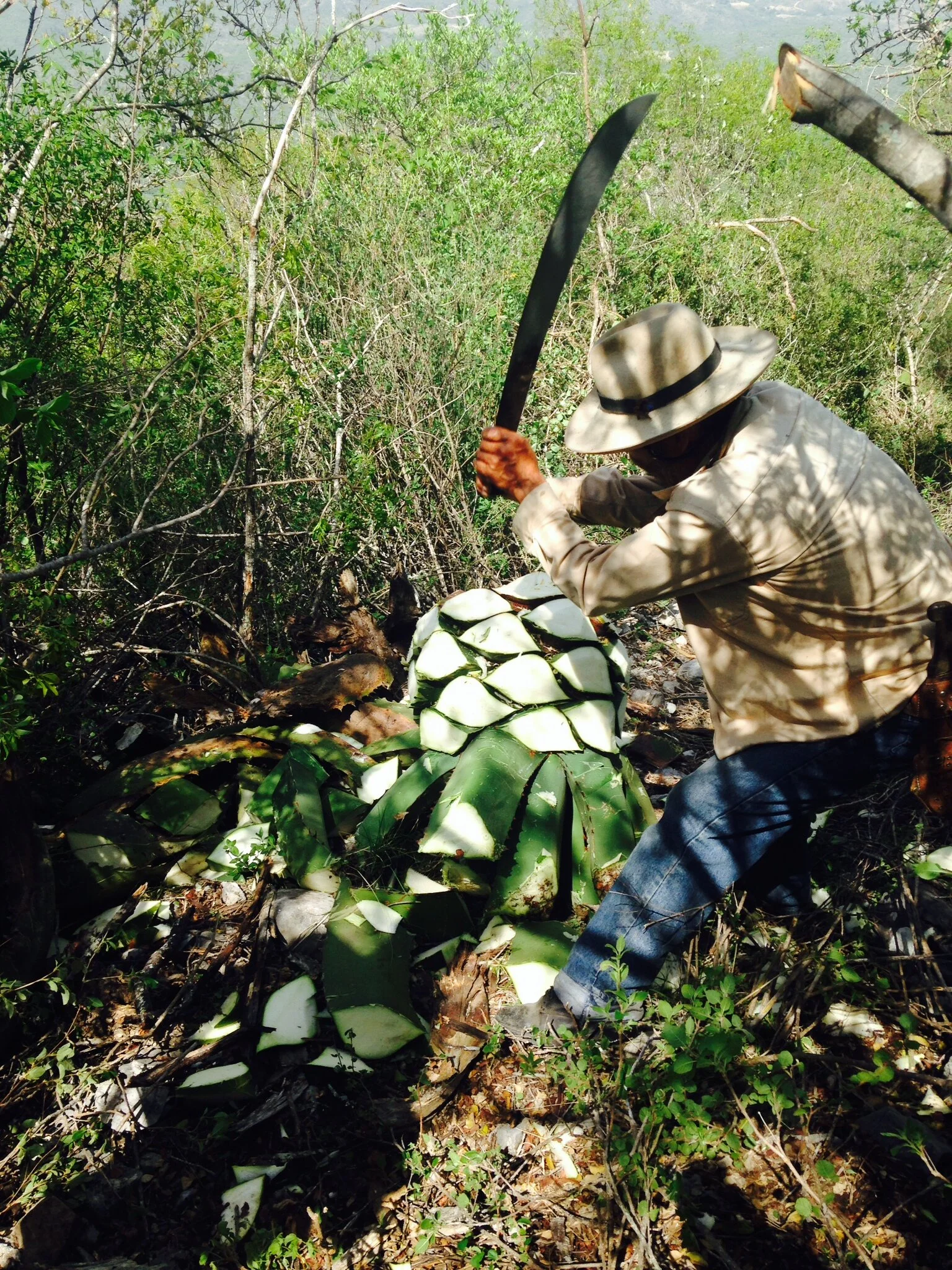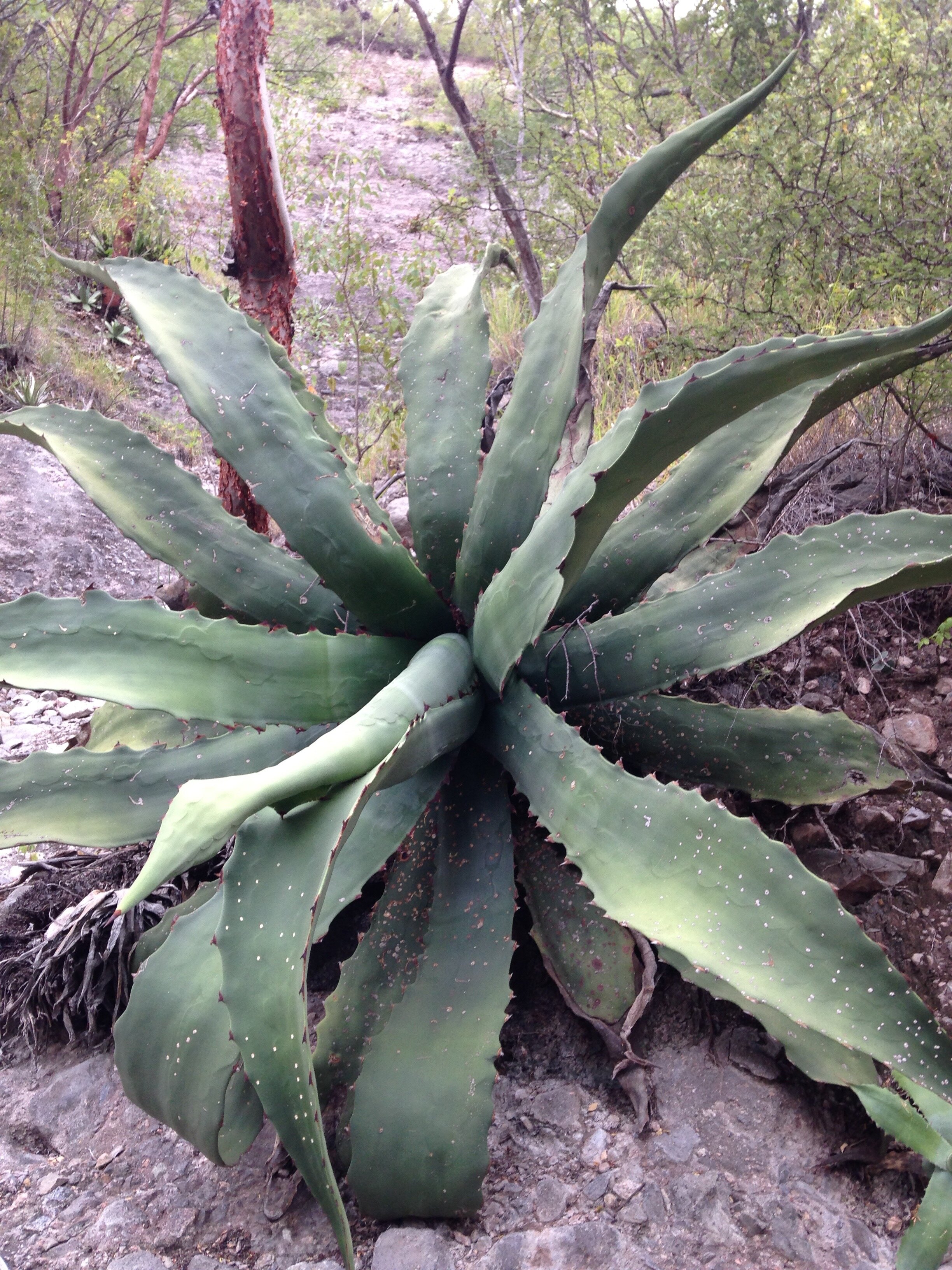Tepextate (Agave Marmorata)
Tepextate is a type of Agave marmorata that grows throughout many different regions of Oaxaca. The plant’s historical use in spirits was for the most part limited to remote and isolated regions of difficult terrain, where the production of mezcal was clandestine, and in situations where palenqueros did not have the land and resources to plant other cultivars preferred for their higher yield. In the past, Tepextate was often used as medicine, with different desired properties derived from both the roots and the juices of its thick leaves. Except under extreme conditions of stress, Tepextate does not reproduce through offsets in its rhizome system, but rather exclusively from seed. Bats, moths, and hummingbirds are its primary pollinators, and is renowned for its large and beautiful yellow inflorescence. The flowering stocks begin to shoot up in February, and typically flower during Holy Week and are used for decoration in churches of the Central Valleys for Easter. Amongst palenqueros the plant is infamous for its extremely low sugar content and the difficulty involved in harvesting and transporting these plants from their preferred terrain of rocky hillside, steep ravines, and cliffs. These areas are most often inaccessible to trucks or even donkeys or mules and must be carried out by hand- leaving behind itchy rashes and blisters caused by its highly caustic juices. The name itself comes from Tepetate, a Hispanicized word originating from the Nahuatl tepetlatl, which refers to a geological horizon, a lime-rich but hardened and poor draining earth surface. It is in arid environments with steep slopes and extremely rocky and limestone-rich soils where the Tepextate maguey thrives, but even under ideal conditions may require 25 to as much 60 kgs of cooked plant to yield just one liter of spirit. For comparison, a liter or Espadín or different karwinskii cultivars will require somewhere between 8-10kg of roasted agave; Tepextate is one of the lowest yielding varieties used in the production of agave spirits. In Miahuatlán, Tepextate is sometimes found at lower elevations but is more prevalent in zones just below 1400m to just above 2000m. It is often found growing alongside various aromatic herbs and plants, such as verbena, copal trees, and wild chiles.
There are two main morphological expressions of Tepextate in the Miahuatlán district, both exuberantly large and green, but with very differently shaped and sized leaves, with one type expressing considerably shorter and wider leaves. It is said that this type has a higher sugar content and thus produces a slightly larger yield. Both types can take anywhere from 9-25 years to mature, depending on a multitude of environmental factors, although palenqueros that know the plant intimately generally harvest after 12 and 15 years in the wild.
It is important to note that the plant known as Tepextate in much of the state of Oaxaca is distinct from the variety known as Pichumetl or Pichomel that grows in both wild and cultivated conditions in the Mixteca regions of Oaxaca and Puebla where this marbled-leaf varietal is often cultivated for pulque. In beginning to understand these plants and the very particular regional flavors found in their distilled form, it is important to respect the often hyper-regional colloquial names applied to the agave. These names reflect very specific cultural and linguistic origins, as well as a particular peoples’ relationship to the plant.
Habitat: Tropical deciduous forest, xeric shrublands and in the transition zone between these two communities and oak forests, on limestone igneous soils. At elevations between 680-1600 m.
Phenology: Tepextate flowers in March and April and fruits May - June.

